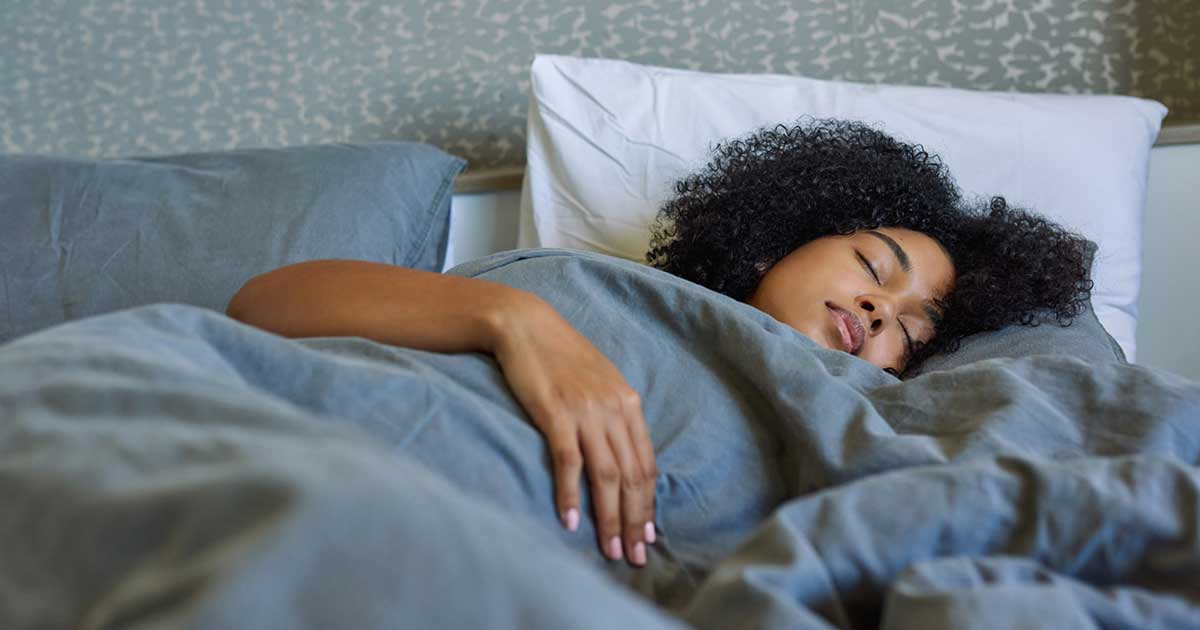Sleeping with Neck Pain: Advice from a Pain Specialist
Advice to improve your movement, fitness, and overall health from the world's #1 in orthopedics.
For many of us, the sounding of the alarm clock each morning is accompanied by another, more frustrating irritant: a stiff, painful neck. “If you are constantly waking up with a stiff neck that’s worse in the morning, more likely than not it’s related to your sleeping position and possible underlying cervical spine problems,” says Harmandeep Singh, MD, an anesthesiologist and pain medicine specialist at HSS.

Like nearly all body parts, the neck has a neutral position and an optimal range of motion. Keep it in that neutral position and range and it doesn’t complain. But extend those muscles, tendons and ligaments too far in any direction for a long time and they’ll let you know. Do that for hours every night and the result can be stiffness, muscle spasms, pain and worse.
“If your neck is constantly in poor positions, you’re always causing wear and tear to it,” Dr. Singh explains. “Over time, that can lead to degenerative disease like spinal arthritis, stenosis and neurologic problems.”
Symptoms of neurologic impairment include numbness and tingling in the extremities, clumsiness and weakness. If you develop any of these signs, see a physician as soon as possible.
How to Position the Neck for Sleep
As it happens, one of the keys to avoid waking up with neck pain starts before the lights go out. “If you don’t have neck pain already, it’s important to practice good postural hygiene to prevent cervical spine disease in the future,” Dr. Singh says. “If you already have neck pain, you should try to optimize every aspect that’s under your control, sleep being one of them.”
People often forget that what they do while they’re awake can trigger the tossing and turning that can lead to poor positioning — and pain — at night. “It is important to practice good sleep hygiene,” Dr. Singh says, “which can include following a consistent sleep schedule, having a comfortable sleep environment, stopping electronic device use prior to bed and exercising during the day.”
The most important thing people with neck pain should do when they lie down in bed, he adds, is to make sure their spine — particularly the upper, or cervical, portion — is in a neutral position. The neck should not be flexed forward or backward or to one side.
Use Pillows the Right Way to Help Alignment
Pillows can be friends, but they can also be enemies. Using too many can over-flex the neck, compressing the spine and aggravating the muscles in the area. Using too few, on the other hand, can allow overextension in the opposite direction. In either case, the result is worse stiffness and pain.
Although conventional wisdom states that back sleeping is best for the neck, Dr. Singh says side-sleeping is also fine as long as the cervical spine is in a neutral position. Sleeping on your stomach is the worst option, as it always causes you to turn your neck to one side or the other and doesn’t allow you to maintain a neutral position.
However you sleep, “use pillows appropriately to position the cervical spine,” he adds. The choice depends largely on a person’s anatomy. For some, two pillows might be necessary, while for others a single, form-fitting pillow works best. Don’t be afraid to try different approaches to see what helps and what doesn’t.
Most pillows are too flat to provide arch support for the cervical spine. “You can add a cervical pillow or roll behind your neck to help fill in that gap and provide support,” Dr. Singh suggests.
Therapeutic pillows can be helpful for some people, but they’re not a fix for everyone, he adds. “A lot of these pillows and strategies only work if you use them consistently. Also, sleep position is not the sole reason people have neck pain, so there has to be more of a comprehensive approach to dealing with the problem than just switching pillows. It’s important to consult with your doctor to have your symptoms assessed.”
Making Sleep Improvements that Last
Something else to keep in mind: If you’ve gotten used to sleeping in a position that isn’t good for your spine, making a change might feel awkward and even uncomfortable at first. “I always encourage people when it comes to these lifestyle modifications to start small and slow and gradually escalate,” Dr. Singh says.
He also recommends a short course of stretching and range-of-motion exercises as soon as you wake up. “Even five to 10 minutes will help reduce the level of discomfort and stiffness,” he says.
Which exercises to perform depends on the particular muscles that are affected, he adds. A physical therapist can create a personalized routine that’s right for you.
The good news, Dr. Singh says, is that people can improve their sleeping posture gradually over time — and the results are worth the effort. “Sleep is something everybody does an average of eight hours a day,” he says. “In the long run, it will have an impact on your overall spine health.”



